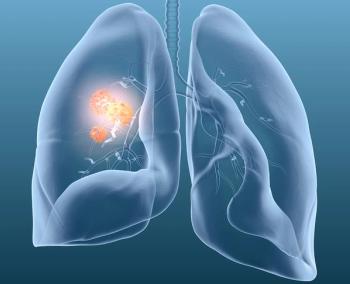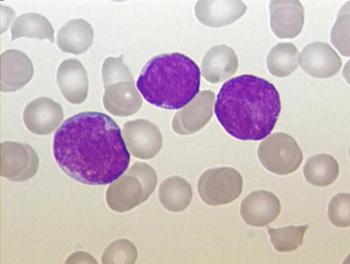
Zanubrutinib Elicits High Response Rates and Survival Benefit in R/R MCL
Zanubrutinib yielded a high response rate and extended progression-free survival in patients with relapsed/refractory mantle cell lymphoma.
Zanubrutinib (Brukinsa) demonstrated positive activity, an extended survival benefit, and high response rates after being administered to patients with relapsed or refractory mantle cell lymphoma (R/R MCL), according to the results of a phase 1/2 study (NCT02343120) that was published in Blood Advances.
Patients who were treated with zanubrutinib experienced a high overall response rate of 84%, including a complete response (CR) rate of 25% (n = 8). Additionally, the median PFS was 21.1 months (95% CI, 13.2–not estimable) for patients with R/R MCL.
The study, which accessed the safety and efficacy of Bruton tyrosine kinase inhibitor zanubrutinib in different B-cell malignancies, enrolled 37 patients with R/R MCL and received zanubrutinib. Zanubrutinib was administered to 32 patients at a 320 mg dose that was taken as either a 160 mg dose twice daily (n = 14) or a 320 mg dose once daily (n = 18). Additionally, 5 other patients received different starting doses of 40 mg once daily (n = 1), 80 mg once daily (n = 2), or 160 mg once daily (n = 2).
The median number of prior therapies was 1, with 30 patients receiving a rituximab (Rituxan) or rituximab-containing regimen. One patient received rituximab as their first and only line of therapy and achieved a partial response after 8 cycles. The patient started treatment with zanubrutinib after approximately 4 months on rituximab; they are still taking zanubrutinib.
The median time on study was 18.8 months, with patients having received treatment for a median of 15.4 months. At the end of the data cutoff, 14 (44%) patients continued to receive the study drug, while 18 (56%) had discontinued it. The primary reasons for discontinuation were disease progression and adverse effects (AEs). One AE that was thought to be related to zanubrutinib was grade 3 peripheral edema. At the time of data cutoff, 12 patients had died from AEs and disease progression.
Investigators based response assessments on CT and PET imaging if available. Investigators identified an objective response in 29 (91%) of patients with 10 (31%) achieving a CR. An independent review committee determined that 27 (84%) of patients had an overall response, while 8 (25%) achieved a CR. The median time to CR was 5.5 months. No difference between dosing regimens was found regarding ORR, with a rate of 86% for the 160 mg twice daily dose and 83% for the 320 mg once daily dose, as well as 29% and 22% for the 160 mg twice daily and 320 mg once daily doses, respectively.
The median duration of response was 18.5 months (95% CI, 12.6-–NE). Of the 27 patients who responded, 8 patients progressed and 2 died. At 6 months, 83.3% of patients were responding to treatment, and at 12 months, 78.7% were responding.
Additional findings indicated that, 14 (43.8%) patients had progressed or died and 18 (56.3%) were censored. At 6 and 12 months, the event free rates were 87.3% and 73.0%, respectively. Moreover, the 12-month overall survival rate was 83% and 64.4% at 24 months.
Some of the AEs that resulted in discontinuation included cerebral infarction, pneumonia, worsening congestive cardiac failure, and acute kidney injury with anti-neutrophil cytoplasmic autoantibody vasculitis. A total of 16 patients required dose interruptions and 1 patient required dose reduction due to AEs. Additionally, 3 patients had AEs that led to death.
Among those who were treated with zanubrutinib, 31 (96.9%) reported \ AEs of any grade and 59.4% reported AEs of grade 3 or higher. The most reported AEs were diarrhea (43.8%; most of which was grade 1), contusion (37.5%), constipation (31.1%), and upper respiratory tract infection (31.3%). Several AEs that were grade 3 or higher and occurred in less than 2 patients included anemia, neutropenia, pneumonia, and myalgia.
Investigators acknowledged that some limitations included the small sample size as well as the single arm study.
Reference:
Tam CS, Opat S, Simpson D, et al. Zanubrutinib for the treatment of relapsed or refractory mantle cell lymphoma. Blood Adv. 2021;5(12):2577-2585. doi:10.1182/bloodadvances.2020004074
Newsletter
Stay up to date on recent advances in the multidisciplinary approach to cancer.

















































































